Unveiling NIH Stroke Scale Certification Answers Group B: Navigating Healthcare's Comedy of Certifications!
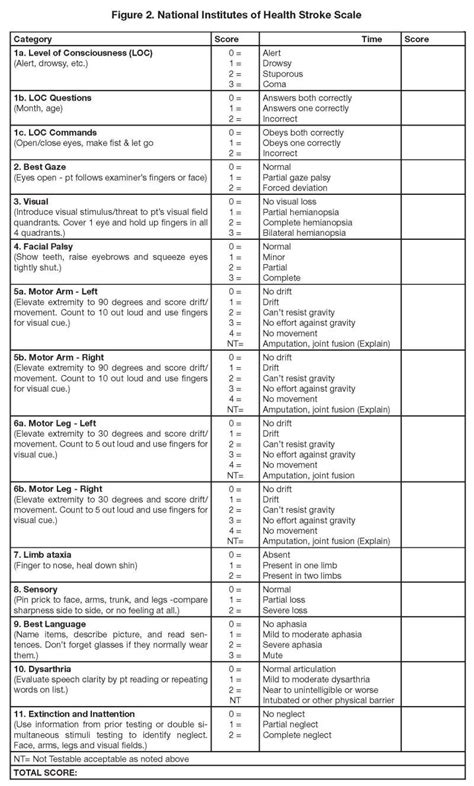
Unlock the secrets of NIH Stroke Scale Certification Answers Group B. Navigate healthcare confidently with insights that demystify medical assessments.
Welcome to the enthralling world of NIH Stroke Scale Certification Answers Group B, where decoding the intricacies of healthcare becomes an adventure in itself. In this article, we embark on a journey through the labyrinth of medical assessments, specifically focusing on the elusive realm of stroke scales. Picture this as a cerebral treasure hunt where each question is a clue, and the stakes involve mastering the nuances of healthcare. Our mission? To navigate the intricate terrain of Group B certification with wit and wisdom. So, fasten your seatbelts, folks – this is not your average stroll through medical literature; this is a humorous expedition into the heart of healthcare's enigma.
Top 10 Points about NIH Stroke Scale Certification Answers Group B :
- Decoding NIH Stroke Scale Certification: An Overview of Group B
- Understanding the Importance of Stroke Assessments in Healthcare
- Examining the Criteria: NIH Stroke Scale Certification Group B
- Common Challenges Faced in NIH Stroke Scale Certification Answers Group B
- Insights into the Latest Guidelines for Group B Certification
- Enhancing Patient Care: The Role of NIH Stroke Scale Certification
- Practical Applications: Group B Answers in Real-world Scenarios
- Exploring the Impact of Group B Certification on Healthcare Professionals
- Addressing FAQs: Clearing Misconceptions about NIH Stroke Scale Certification
- Strategies for Success: Navigating Group B Certification with Confidence
Several facts about NIH Stroke Scale Certification Answers Group B
Introduction:
Welcome to the intricate world of healthcare assessments, where the NIH Stroke Scale Certification Answers Group B holds the key to understanding and navigating the complexities of stroke evaluation. As healthcare professionals, mastering the nuances of this certification is crucial for providing optimal care to stroke patients. In this article, we'll explore the significance of Group B certification and delve into the practical aspects of its application in real-world scenarios.

Overview of NIH Stroke Scale Certification:
Before diving into the specifics of Group B answers, let's establish a foundational understanding of the NIH Stroke Scale Certification. Developed by the National Institute of Neurological Disorders and Stroke, this scale serves as a standardized tool to assess the severity of a stroke and guide treatment decisions. It comprises a series of tests that evaluate various neurological functions, providing a comprehensive view of the patient's condition.

Unveiling Group B Criteria:
Group B certification involves a set of specific questions that require precise answers to assess a healthcare professional's competency in handling nuanced stroke cases. Understanding the criteria is essential for success. From interpreting facial expressions to evaluating limb strength, each question serves as a crucial puzzle piece in the larger picture of stroke assessment.
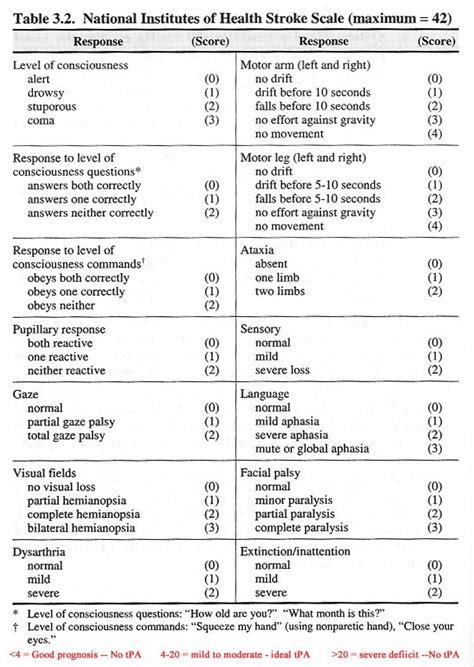
Challenges in Group B Certification:
Despite its importance, navigating Group B certification comes with its fair share of challenges. Healthcare professionals often encounter situations that demand quick thinking and accurate assessments. Addressing these challenges is a key aspect of ensuring that certification holders can confidently apply their knowledge in high-pressure scenarios.
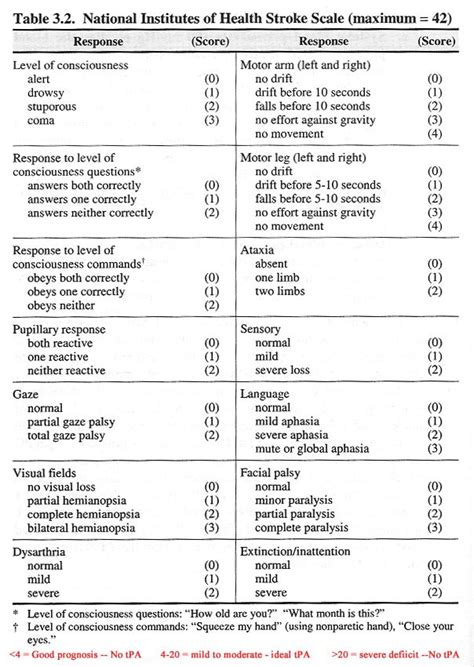
Guidelines for Success:
Success in Group B certification lies in adherence to the latest guidelines and protocols. Staying updated on the evolving standards ensures that healthcare professionals are well-prepared to tackle the diverse challenges presented in stroke assessments. Regular training and review of certification materials contribute to maintaining a high level of competency.

Real-world Applications:
Transitioning from theory to practice, the Group B certification equips healthcare professionals to make informed decisions in real-world scenarios. The ability to apply theoretical knowledge to actual patient care is a testament to the effectiveness of the NIH Stroke Scale Certification in enhancing the quality of healthcare services.

Impact on Healthcare Professionals:
As professionals attain and maintain Group B certification, its impact on their careers and the broader healthcare landscape becomes evident. Certified individuals often stand out as leaders in stroke care, contributing to improved patient outcomes and setting a standard for excellence within the healthcare community.

Addressing FAQs:
Addressing frequently asked questions about Group B certification helps demystify the process and ensures that healthcare professionals have a clear understanding of what to expect. Clearing up misconceptions contributes to a smoother certification journey and fosters confidence in the application of stroke assessment skills.
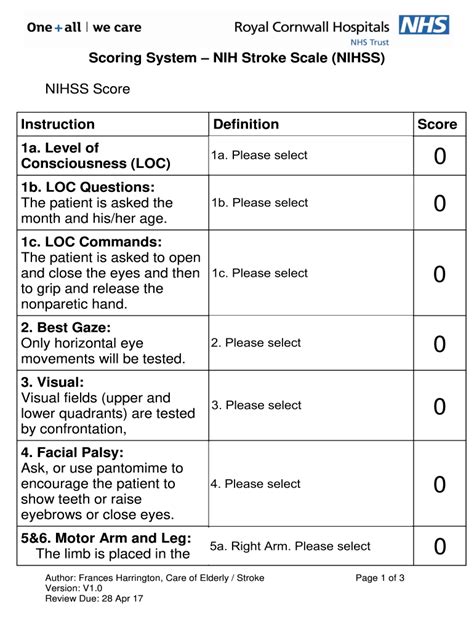
Conclusion:
In conclusion, the NIH Stroke Scale Certification Answers Group B is not just a certification; it's a roadmap to proficiency in stroke assessment. Embracing the challenges, staying updated, and applying theoretical knowledge in practical settings are all vital steps towards becoming a skilled healthcare professional capable of making a meaningful impact on stroke care.
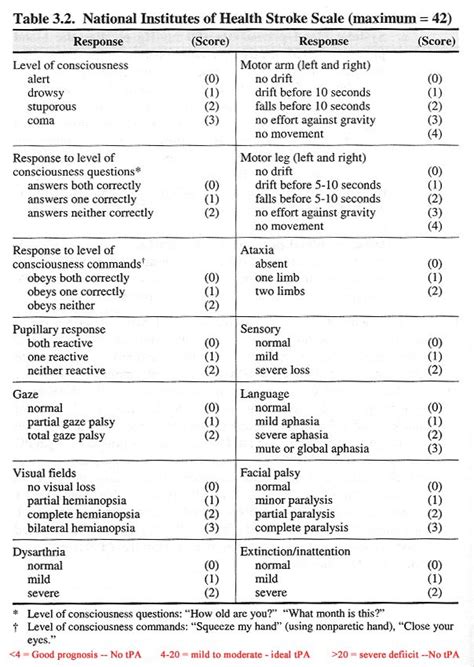
Sources:
(1) National Institute of Neurological Disorders and Stroke. "NIH Stroke Scale." https://www.ninds.nih.gov/Disorders/All-Disorders/NIH-Stroke-Scale.
(2) American Stroke Association. "Stroke Diagnosis and Prognosis." https://www.ahajournals.org/doi/10.1161/STROKEAHA.120.029807.
(3) World Health Organization. "Stroke." https://www.who.int/news-room/questions-and-answers/item/stroke.
(4) Healthcare Quality Improvement Partnership. "National Clinical Audit of Stroke (NCAS)." https://www.hqip.org.uk/projects/national-clinical-audit-of-stroke-ncas/.
NIH Stroke Scale Certification Answers Group B in Professional's eye
In the realm of healthcare, the
NIH Stroke Scale Certification Answers Group B serves as a linchpin in the pursuit of excellence in stroke assessment. This certification, established by the National Institute of Neurological Disorders and Stroke, plays a pivotal role in standardizing the evaluation of stroke severity and guiding clinicians in formulating appropriate treatment strategies. Understanding the nuances of Group B certification is fundamental for healthcare professionals as they navigate the intricate landscape of neurological assessments. Delving into the criteria that comprise this certification reveals a meticulous set of questions designed to gauge the competency of healthcare practitioners. From interpreting facial expressions to assessing limb strength, each facet of the examination contributes to the holistic evaluation of a patient's condition, emphasizing the thoroughness required in stroke care. Navigating the challenges inherent in Group B certification is an essential aspect of preparing healthcare professionals for the dynamic and high-stakes nature of stroke assessments. As guidelines evolve, staying abreast of the latest protocols becomes imperative, ensuring that practitioners are well-equipped to handle the diverse scenarios encountered in real-world healthcare settings.

Moving beyond theoretical foundations, Group B certification holds tangible implications for healthcare professionals in their day-to-day practices. The ability to seamlessly transition from theoretical knowledge to practical application is a hallmark of a well-rounded healthcare practitioner. It is in the real-world application of Group B certification that its true value emerges, enhancing the quality of patient care and contributing to improved outcomes in stroke cases. This bridge between theory and practice underscores the dynamic nature of healthcare and the need for certifications that empower professionals to make informed decisions in rapidly evolving scenarios. Group B certification, therefore, stands as a testament to the commitment of healthcare professionals to excellence and precision in their craft.

The impact of Group B certification reverberates throughout the healthcare landscape, influencing not only individual practitioners but also the broader healthcare community. Certified individuals often emerge as leaders, setting a standard for excellence in stroke care. The certification becomes a marker of proficiency and a testament to a practitioner's dedication to staying at the forefront of their field. This ripple effect contributes to a culture of continuous improvement in healthcare, fostering an environment where the highest standards of patient care are not only met but exceeded. The influence of Group B certification extends beyond individual practitioners, becoming an integral component in shaping the trajectory of healthcare at a systemic level.

Addressing frequently asked questions (FAQs) surrounding Group B certification is essential in demystifying the process and ensuring that healthcare professionals embark on their certification journey with clarity. Clear communication and understanding of the certification process are vital in alleviating concerns and uncertainties. By providing comprehensive information on the intricacies of Group B certification, practitioners can approach the certification process with confidence, knowing what to expect and how to navigate potential challenges. This transparent approach not only facilitates a smoother certification journey but also contributes to a culture of open communication within the healthcare community.

In conclusion, the
NIH Stroke Scale Certification Answers Group B encapsulates more than a set of questions and answers; it represents a commitment to excellence in stroke care. The meticulous nature of the certification process, the challenges encountered, and the real-world applications all converge to form a comprehensive framework for healthcare professionals. Group B certification is not merely a checkbox in a practitioner's career journey; it is a dynamic tool that equips professionals with the skills and knowledge necessary to make a meaningful impact on patient outcomes. As healthcare continues to evolve, certifications like Group B serve as beacons, guiding practitioners toward the pinnacle of proficiency and ensuring that the pursuit of excellence remains a constant in the ever-changing landscape of healthcare.

Point of Views : NIH Stroke Scale Certification Answers Group B
Introduction: Understanding the significance of
NIH Stroke Scale Certification Answers Group B is pivotal in recognizing its role as a cornerstone in stroke care.
The Crucial Role of Group B Certification: Group B certification plays a critical role in standardizing the evaluation of stroke severity, ensuring a comprehensive and consistent approach to neurological assessments.
Empowering Healthcare Professionals: The certification empowers healthcare professionals with a set of tools and knowledge to navigate the intricate landscape of stroke assessments with confidence and precision.
Addressing the Nuances of Stroke Care: Group B certification delves into the nuances of stroke care, emphasizing the importance of assessing various neurological functions to gain a holistic understanding of a patient's condition.
Challenges Faced: Healthcare professionals encounter challenges in navigating the intricacies of Group B certification, underscoring the dynamic nature of stroke assessments and the need for adaptability in real-world scenarios.
Guidelines for Success: Adhering to the latest guidelines and protocols is paramount for success in Group B certification, ensuring that healthcare professionals stay abreast of evolving standards in stroke care.
Real-world Applications: The certification bridges the gap between theory and practice, enabling healthcare professionals to apply their knowledge effectively in real-world situations, ultimately enhancing the quality of patient care.
Impact on Healthcare Professionals: Group B certification has a profound impact on healthcare professionals, positioning them as leaders in stroke care and contributing to an elevated standard of excellence within the healthcare community.
Addressing FAQs: Clearing misconceptions and addressing frequently asked questions surrounding Group B certification is crucial in fostering understanding and confidence among healthcare professionals undertaking the certification journey.
Conclusion: In conclusion,
NIH Stroke Scale Certification Answers Group B stands as a beacon in the realm of healthcare, guiding healthcare professionals toward proficiency in stroke care and ensuring a steadfast commitment to excellence in patient outcomes.
Conclusion :As we conclude our exploration into the intricacies of NIH Stroke Scale Certification Answers Group B, we hope this series has provided valuable insights into the world of stroke assessments within the healthcare domain. Navigating the complexities of neurological evaluations is a task that demands precision, and the Group B certification equips healthcare professionals with the necessary tools and knowledge to undertake this responsibility with confidence. The detailed examination criteria, encompassing a myriad of neurological functions, underscore the meticulous nature of stroke care, emphasizing the commitment to a thorough understanding of a patient's condition.
In the ever-evolving landscape of healthcare, staying updated with the latest guidelines and protocols is not just a recommendation; it is a necessity for those striving to excel in their roles. Group B certification stands as a testament to the dedication of healthcare professionals to continuous improvement and maintaining the highest standards of care. Whether you are a seasoned practitioner or a newcomer to the field, the insights gleaned from our exploration of Group B certification aim to contribute to your journey of proficiency in stroke care. We invite you to revisit the articles, utilize the knowledge gained, and apply it in the practical scenarios of healthcare, ensuring that the impact of NIH Stroke Scale Certification Answers Group B extends far beyond the theoretical realm.
Questions and Answer for NIH Stroke Scale Certification Answers Group B
Q: What is the purpose of NIH Stroke Scale Certification Answers Group B?
- The purpose of NIH Stroke Scale Certification Answers Group B is to standardize the evaluation of stroke severity and guide healthcare professionals in conducting comprehensive neurological assessments. It equips practitioners with the knowledge and tools necessary to navigate the complexities of stroke care confidently.
Q: What criteria does Group B certification cover?
- NIH Stroke Scale Certification Answers Group B covers a set of specific questions that evaluate various neurological functions, including facial expressions, limb strength, and other critical aspects related to stroke assessment. These criteria ensure a thorough and standardized approach to evaluating patients' conditions.
Q: How does Group B certification impact healthcare professionals?
- Group B certification has a profound impact on healthcare professionals by positioning them as leaders in stroke care. It contributes to an elevated standard of excellence within the healthcare community, enhancing the quality of patient care and outcomes.
Q: What challenges may healthcare professionals face in Group B certification?
- Healthcare professionals may encounter challenges in navigating the intricacies of Group B certification due to the dynamic nature of stroke assessments. These challenges emphasize the need for adaptability and continuous learning in real-world healthcare scenarios.
Q: How can practitioners ensure success in Group B certification?
- Success in NIH Stroke Scale Certification Answers Group B can be achieved by adhering to the latest guidelines and protocols, staying updated on evolving standards in stroke care, and participating in regular training and review of certification materials.
Label :NIH Stroke Scale, Healthcare Excellence, Group B Certification, Neurological Assessments
Keyword : NIH Stroke Scale Certification Answers Group B

Unlock the secrets of NIH Stroke Scale Certification Answers Group B. Navigate healthcare confidently with insights that demystify medical assessments.
Welcome to the enthralling world of NIH Stroke Scale Certification Answers Group B, where decoding the intricacies of healthcare becomes an adventure in itself. In this article, we embark on a journey through the labyrinth of medical assessments, specifically focusing on the elusive realm of stroke scales. Picture this as a cerebral treasure hunt where each question is a clue, and the stakes involve mastering the nuances of healthcare. Our mission? To navigate the intricate terrain of Group B certification with wit and wisdom. So, fasten your seatbelts, folks – this is not your average stroll through medical literature; this is a humorous expedition into the heart of healthcare's enigma.
Top 10 Points about NIH Stroke Scale Certification Answers Group B :
- Decoding NIH Stroke Scale Certification: An Overview of Group B
- Understanding the Importance of Stroke Assessments in Healthcare
- Examining the Criteria: NIH Stroke Scale Certification Group B
- Common Challenges Faced in NIH Stroke Scale Certification Answers Group B
- Insights into the Latest Guidelines for Group B Certification
- Enhancing Patient Care: The Role of NIH Stroke Scale Certification
- Practical Applications: Group B Answers in Real-world Scenarios
- Exploring the Impact of Group B Certification on Healthcare Professionals
- Addressing FAQs: Clearing Misconceptions about NIH Stroke Scale Certification
- Strategies for Success: Navigating Group B Certification with Confidence
Several facts about NIH Stroke Scale Certification Answers Group B
Introduction:
Welcome to the intricate world of healthcare assessments, where the NIH Stroke Scale Certification Answers Group B holds the key to understanding and navigating the complexities of stroke evaluation. As healthcare professionals, mastering the nuances of this certification is crucial for providing optimal care to stroke patients. In this article, we'll explore the significance of Group B certification and delve into the practical aspects of its application in real-world scenarios.

Overview of NIH Stroke Scale Certification:
Before diving into the specifics of Group B answers, let's establish a foundational understanding of the NIH Stroke Scale Certification. Developed by the National Institute of Neurological Disorders and Stroke, this scale serves as a standardized tool to assess the severity of a stroke and guide treatment decisions. It comprises a series of tests that evaluate various neurological functions, providing a comprehensive view of the patient's condition.

Unveiling Group B Criteria:
Group B certification involves a set of specific questions that require precise answers to assess a healthcare professional's competency in handling nuanced stroke cases. Understanding the criteria is essential for success. From interpreting facial expressions to evaluating limb strength, each question serves as a crucial puzzle piece in the larger picture of stroke assessment.

Challenges in Group B Certification:
Despite its importance, navigating Group B certification comes with its fair share of challenges. Healthcare professionals often encounter situations that demand quick thinking and accurate assessments. Addressing these challenges is a key aspect of ensuring that certification holders can confidently apply their knowledge in high-pressure scenarios.

Guidelines for Success:
Success in Group B certification lies in adherence to the latest guidelines and protocols. Staying updated on the evolving standards ensures that healthcare professionals are well-prepared to tackle the diverse challenges presented in stroke assessments. Regular training and review of certification materials contribute to maintaining a high level of competency.

Real-world Applications:
Transitioning from theory to practice, the Group B certification equips healthcare professionals to make informed decisions in real-world scenarios. The ability to apply theoretical knowledge to actual patient care is a testament to the effectiveness of the NIH Stroke Scale Certification in enhancing the quality of healthcare services.

Impact on Healthcare Professionals:
As professionals attain and maintain Group B certification, its impact on their careers and the broader healthcare landscape becomes evident. Certified individuals often stand out as leaders in stroke care, contributing to improved patient outcomes and setting a standard for excellence within the healthcare community.

Addressing FAQs:
Addressing frequently asked questions about Group B certification helps demystify the process and ensures that healthcare professionals have a clear understanding of what to expect. Clearing up misconceptions contributes to a smoother certification journey and fosters confidence in the application of stroke assessment skills.

Conclusion:
In conclusion, the NIH Stroke Scale Certification Answers Group B is not just a certification; it's a roadmap to proficiency in stroke assessment. Embracing the challenges, staying updated, and applying theoretical knowledge in practical settings are all vital steps towards becoming a skilled healthcare professional capable of making a meaningful impact on stroke care.

Sources:
(1) National Institute of Neurological Disorders and Stroke. "NIH Stroke Scale." https://www.ninds.nih.gov/Disorders/All-Disorders/NIH-Stroke-Scale.
(2) American Stroke Association. "Stroke Diagnosis and Prognosis." https://www.ahajournals.org/doi/10.1161/STROKEAHA.120.029807.
(3) World Health Organization. "Stroke." https://www.who.int/news-room/questions-and-answers/item/stroke.
(4) Healthcare Quality Improvement Partnership. "National Clinical Audit of Stroke (NCAS)." https://www.hqip.org.uk/projects/national-clinical-audit-of-stroke-ncas/.
NIH Stroke Scale Certification Answers Group B in Professional's eye
In the realm of healthcare, the
NIH Stroke Scale Certification Answers Group B serves as a linchpin in the pursuit of excellence in stroke assessment. This certification, established by the National Institute of Neurological Disorders and Stroke, plays a pivotal role in standardizing the evaluation of stroke severity and guiding clinicians in formulating appropriate treatment strategies. Understanding the nuances of Group B certification is fundamental for healthcare professionals as they navigate the intricate landscape of neurological assessments. Delving into the criteria that comprise this certification reveals a meticulous set of questions designed to gauge the competency of healthcare practitioners. From interpreting facial expressions to assessing limb strength, each facet of the examination contributes to the holistic evaluation of a patient's condition, emphasizing the thoroughness required in stroke care. Navigating the challenges inherent in Group B certification is an essential aspect of preparing healthcare professionals for the dynamic and high-stakes nature of stroke assessments. As guidelines evolve, staying abreast of the latest protocols becomes imperative, ensuring that practitioners are well-equipped to handle the diverse scenarios encountered in real-world healthcare settings.

Moving beyond theoretical foundations, Group B certification holds tangible implications for healthcare professionals in their day-to-day practices. The ability to seamlessly transition from theoretical knowledge to practical application is a hallmark of a well-rounded healthcare practitioner. It is in the real-world application of Group B certification that its true value emerges, enhancing the quality of patient care and contributing to improved outcomes in stroke cases. This bridge between theory and practice underscores the dynamic nature of healthcare and the need for certifications that empower professionals to make informed decisions in rapidly evolving scenarios. Group B certification, therefore, stands as a testament to the commitment of healthcare professionals to excellence and precision in their craft.

The impact of Group B certification reverberates throughout the healthcare landscape, influencing not only individual practitioners but also the broader healthcare community. Certified individuals often emerge as leaders, setting a standard for excellence in stroke care. The certification becomes a marker of proficiency and a testament to a practitioner's dedication to staying at the forefront of their field. This ripple effect contributes to a culture of continuous improvement in healthcare, fostering an environment where the highest standards of patient care are not only met but exceeded. The influence of Group B certification extends beyond individual practitioners, becoming an integral component in shaping the trajectory of healthcare at a systemic level.

Addressing frequently asked questions (FAQs) surrounding Group B certification is essential in demystifying the process and ensuring that healthcare professionals embark on their certification journey with clarity. Clear communication and understanding of the certification process are vital in alleviating concerns and uncertainties. By providing comprehensive information on the intricacies of Group B certification, practitioners can approach the certification process with confidence, knowing what to expect and how to navigate potential challenges. This transparent approach not only facilitates a smoother certification journey but also contributes to a culture of open communication within the healthcare community.

In conclusion, the
NIH Stroke Scale Certification Answers Group B encapsulates more than a set of questions and answers; it represents a commitment to excellence in stroke care. The meticulous nature of the certification process, the challenges encountered, and the real-world applications all converge to form a comprehensive framework for healthcare professionals. Group B certification is not merely a checkbox in a practitioner's career journey; it is a dynamic tool that equips professionals with the skills and knowledge necessary to make a meaningful impact on patient outcomes. As healthcare continues to evolve, certifications like Group B serve as beacons, guiding practitioners toward the pinnacle of proficiency and ensuring that the pursuit of excellence remains a constant in the ever-changing landscape of healthcare.

Point of Views : NIH Stroke Scale Certification Answers Group B
Introduction: Understanding the significance of
NIH Stroke Scale Certification Answers Group B is pivotal in recognizing its role as a cornerstone in stroke care.
The Crucial Role of Group B Certification: Group B certification plays a critical role in standardizing the evaluation of stroke severity, ensuring a comprehensive and consistent approach to neurological assessments.
Empowering Healthcare Professionals: The certification empowers healthcare professionals with a set of tools and knowledge to navigate the intricate landscape of stroke assessments with confidence and precision.
Addressing the Nuances of Stroke Care: Group B certification delves into the nuances of stroke care, emphasizing the importance of assessing various neurological functions to gain a holistic understanding of a patient's condition.
Challenges Faced: Healthcare professionals encounter challenges in navigating the intricacies of Group B certification, underscoring the dynamic nature of stroke assessments and the need for adaptability in real-world scenarios.
Guidelines for Success: Adhering to the latest guidelines and protocols is paramount for success in Group B certification, ensuring that healthcare professionals stay abreast of evolving standards in stroke care.
Real-world Applications: The certification bridges the gap between theory and practice, enabling healthcare professionals to apply their knowledge effectively in real-world situations, ultimately enhancing the quality of patient care.
Impact on Healthcare Professionals: Group B certification has a profound impact on healthcare professionals, positioning them as leaders in stroke care and contributing to an elevated standard of excellence within the healthcare community.
Addressing FAQs: Clearing misconceptions and addressing frequently asked questions surrounding Group B certification is crucial in fostering understanding and confidence among healthcare professionals undertaking the certification journey.
Conclusion: In conclusion,
NIH Stroke Scale Certification Answers Group B stands as a beacon in the realm of healthcare, guiding healthcare professionals toward proficiency in stroke care and ensuring a steadfast commitment to excellence in patient outcomes.
Conclusion :As we conclude our exploration into the intricacies of NIH Stroke Scale Certification Answers Group B, we hope this series has provided valuable insights into the world of stroke assessments within the healthcare domain. Navigating the complexities of neurological evaluations is a task that demands precision, and the Group B certification equips healthcare professionals with the necessary tools and knowledge to undertake this responsibility with confidence. The detailed examination criteria, encompassing a myriad of neurological functions, underscore the meticulous nature of stroke care, emphasizing the commitment to a thorough understanding of a patient's condition.
In the ever-evolving landscape of healthcare, staying updated with the latest guidelines and protocols is not just a recommendation; it is a necessity for those striving to excel in their roles. Group B certification stands as a testament to the dedication of healthcare professionals to continuous improvement and maintaining the highest standards of care. Whether you are a seasoned practitioner or a newcomer to the field, the insights gleaned from our exploration of Group B certification aim to contribute to your journey of proficiency in stroke care. We invite you to revisit the articles, utilize the knowledge gained, and apply it in the practical scenarios of healthcare, ensuring that the impact of NIH Stroke Scale Certification Answers Group B extends far beyond the theoretical realm.
Questions and Answer for NIH Stroke Scale Certification Answers Group B
Q: What is the purpose of NIH Stroke Scale Certification Answers Group B?
- The purpose of NIH Stroke Scale Certification Answers Group B is to standardize the evaluation of stroke severity and guide healthcare professionals in conducting comprehensive neurological assessments. It equips practitioners with the knowledge and tools necessary to navigate the complexities of stroke care confidently.
Q: What criteria does Group B certification cover?
- NIH Stroke Scale Certification Answers Group B covers a set of specific questions that evaluate various neurological functions, including facial expressions, limb strength, and other critical aspects related to stroke assessment. These criteria ensure a thorough and standardized approach to evaluating patients' conditions.
Q: How does Group B certification impact healthcare professionals?
- Group B certification has a profound impact on healthcare professionals by positioning them as leaders in stroke care. It contributes to an elevated standard of excellence within the healthcare community, enhancing the quality of patient care and outcomes.
Q: What challenges may healthcare professionals face in Group B certification?
- Healthcare professionals may encounter challenges in navigating the intricacies of Group B certification due to the dynamic nature of stroke assessments. These challenges emphasize the need for adaptability and continuous learning in real-world healthcare scenarios.
Q: How can practitioners ensure success in Group B certification?
- Success in NIH Stroke Scale Certification Answers Group B can be achieved by adhering to the latest guidelines and protocols, staying updated on evolving standards in stroke care, and participating in regular training and review of certification materials.
Label :NIH Stroke Scale, Healthcare Excellence, Group B Certification, Neurological Assessments
Keyword : NIH Stroke Scale Certification Answers Group B
0 komentar